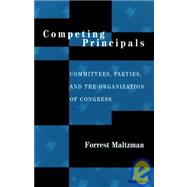
| List of Tables | |
| List of Figures | |
| Introduction | p. 1 |
| Contending Theories of Congressional Committees | p. 9 |
| Hiring the Right Agent: House Committee Assignments | p. 41 |
| Contracts, Incentives, and Structures | p. 57 |
| House Committee Behavior in the Postreform Era | p. 89 |
| Historical Variation in House Committee Behavior | p. 109 |
| The Impact of Structure: A Look at the Senate | p. 129 |
| Conclusion | p. 157 |
| Measuring Committee Salience | p. 165 |
| Collecting the Data | p. 167 |
| The Changing Role of the Rules Committee | p. 169 |
| Scaling the Roll Call Record | p. 173 |
| Conducting the Monte Carlo Simulation | p. 175 |
| Bibliography | p. 177 |
| Index | p. 193 |
| Table of Contents provided by Blackwell. All Rights Reserved. |
The New copy of this book will include any supplemental materials advertised. Please check the title of the book to determine if it should include any access cards, study guides, lab manuals, CDs, etc.
The Used, Rental and eBook copies of this book are not guaranteed to include any supplemental materials. Typically, only the book itself is included. This is true even if the title states it includes any access cards, study guides, lab manuals, CDs, etc.